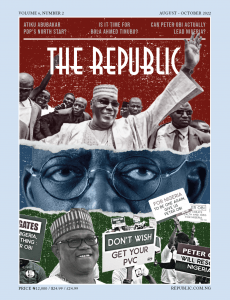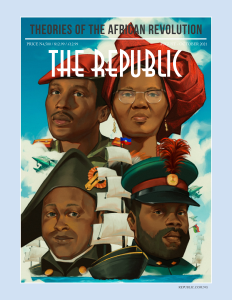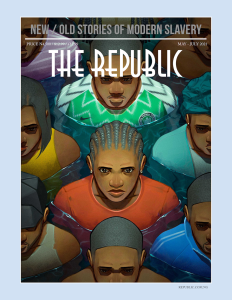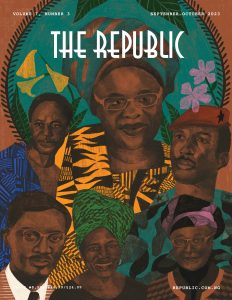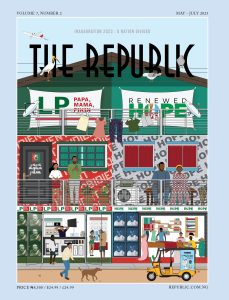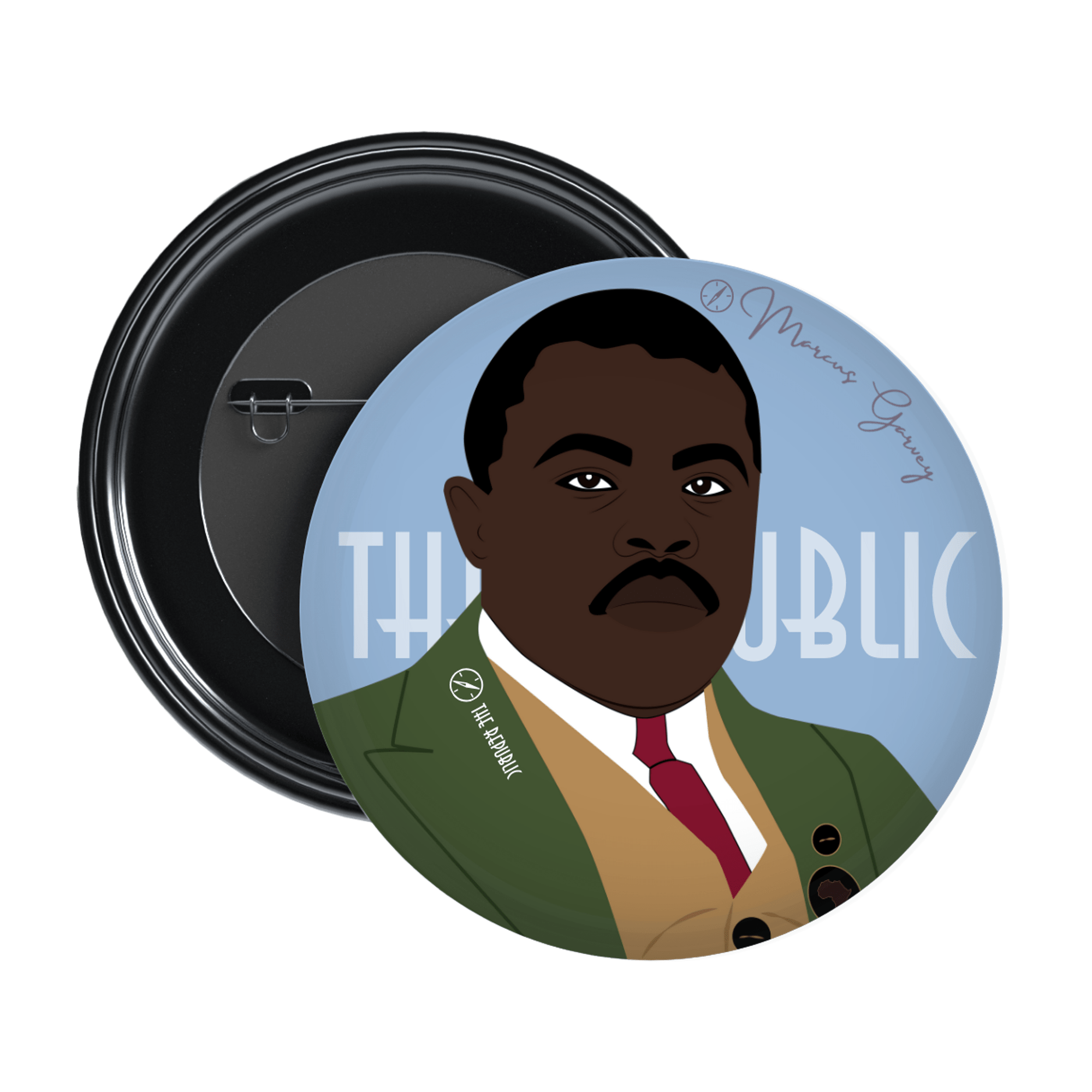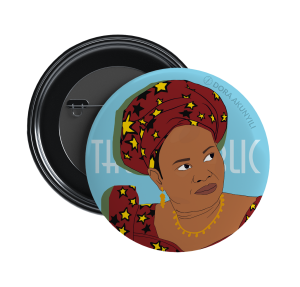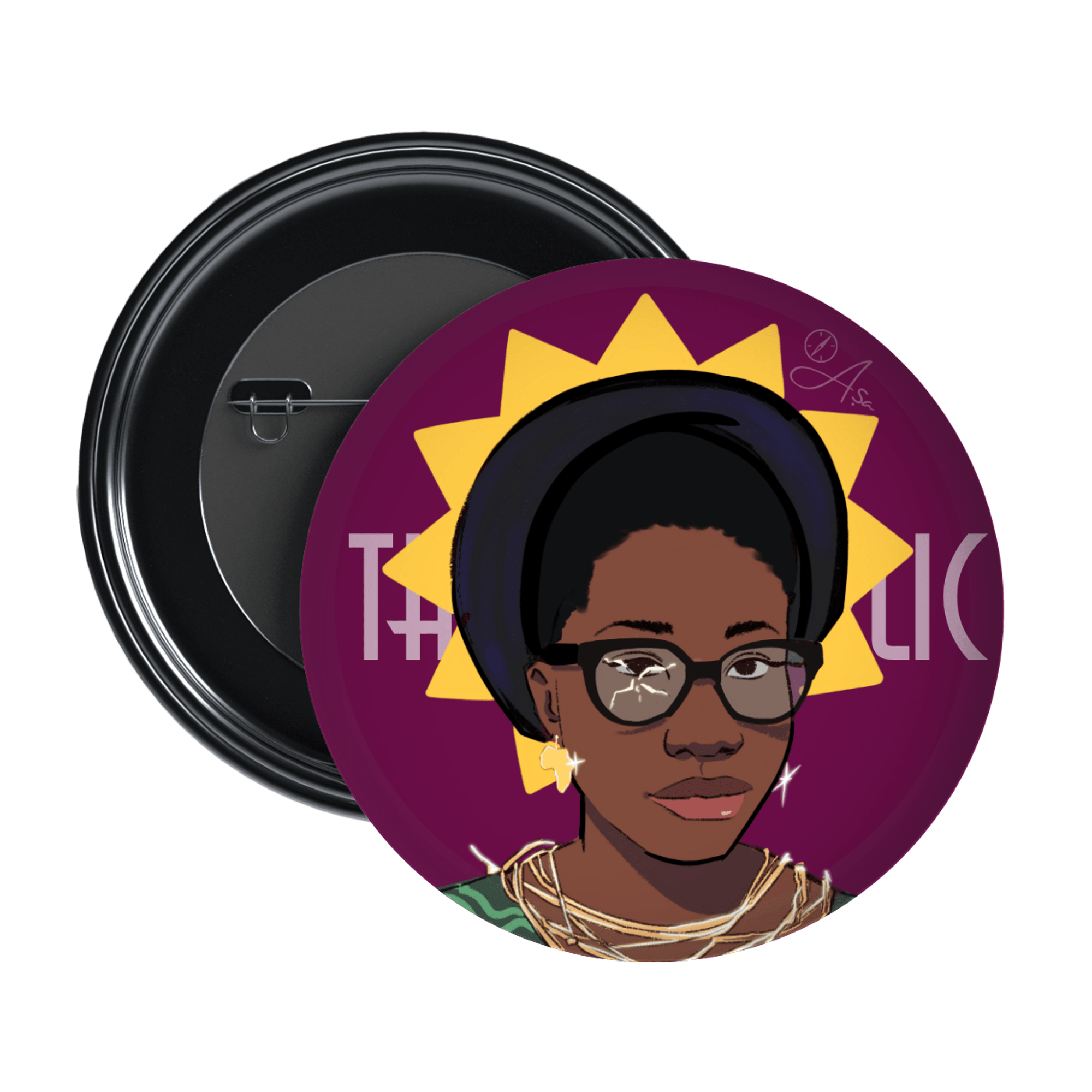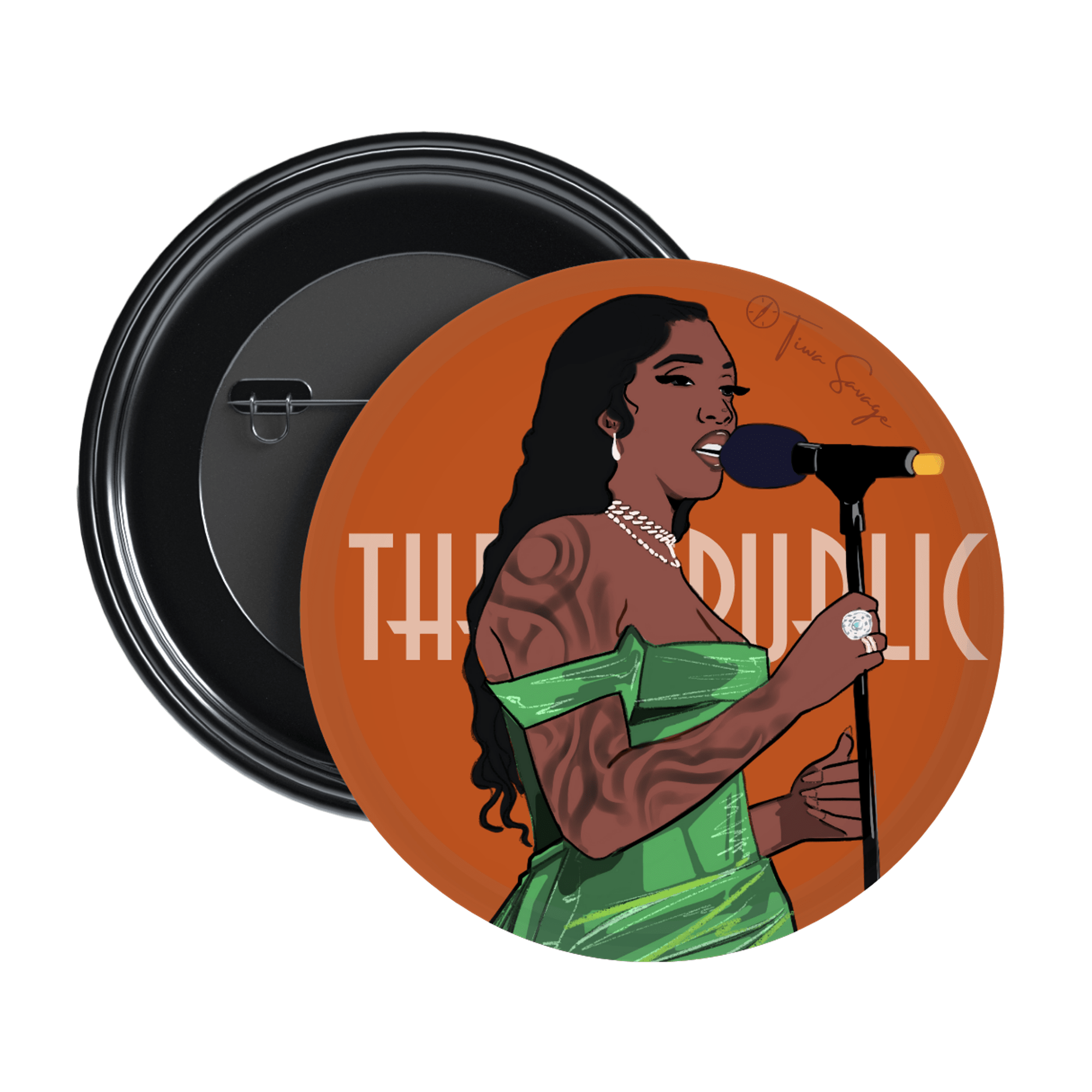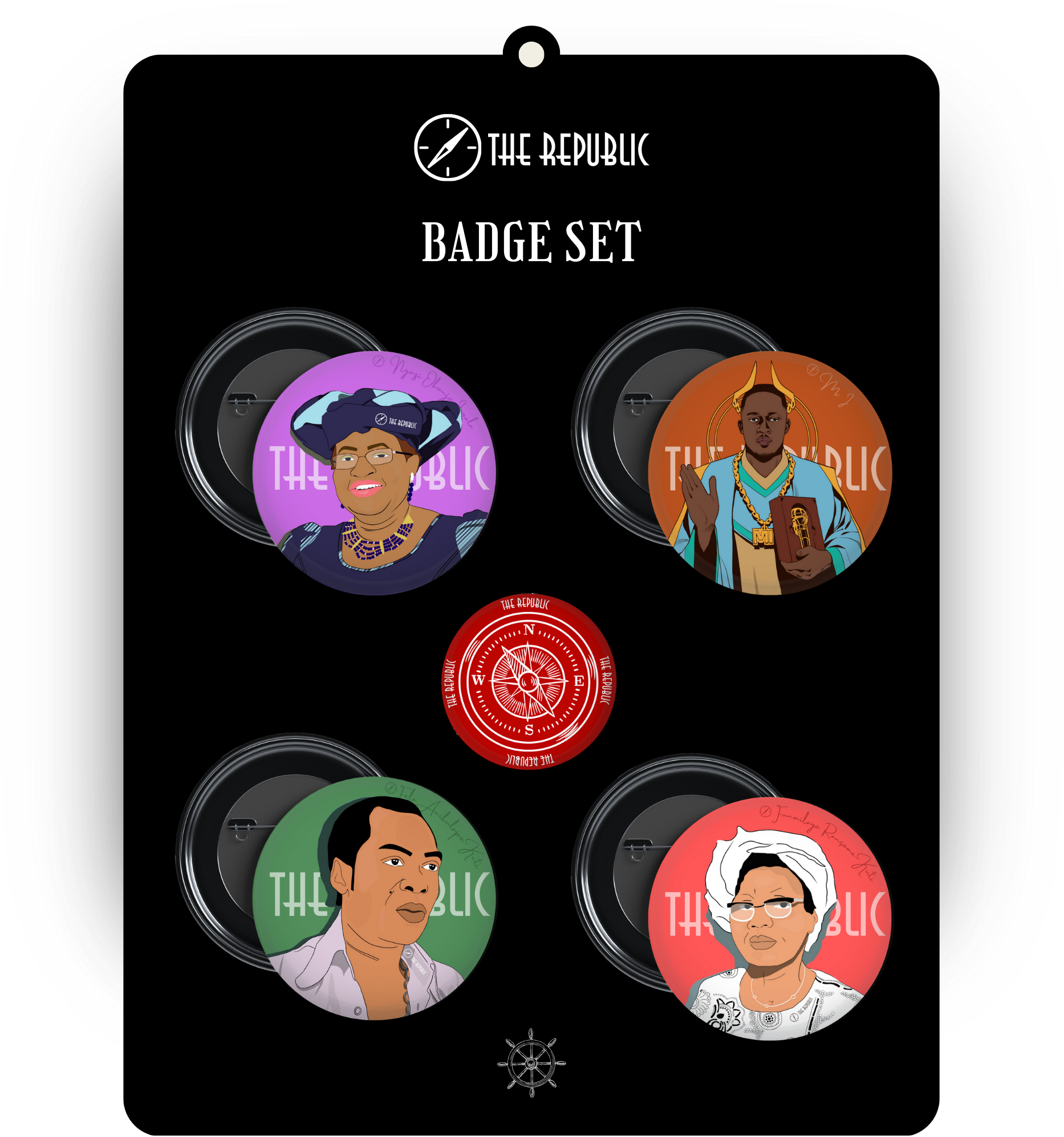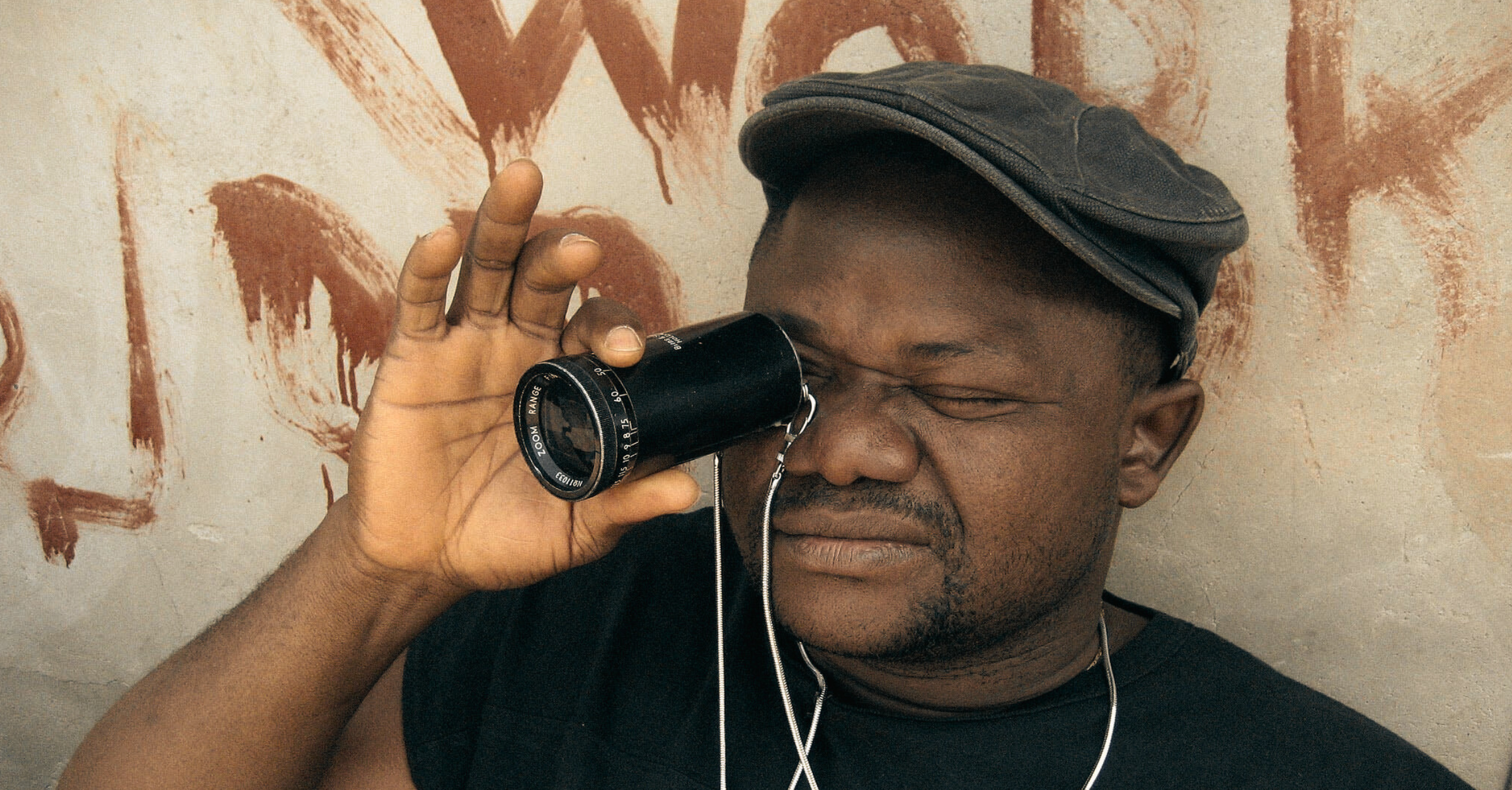
Director Lancelot Oduwa Imasuen from the Nollywood Babylon documentary, 2008. / NFB CA.
the ministry of arts / film dept.
SHOOTING THE GREAT NIGERIAN FILM

Director Lancelot Oduwa Imasuen from the Nollywood Babylon documentary, 2008. / NFB CA.
the ministry of arts / film dept.
SHOOTING THE GREAT NIGERIAN FILM
Can Nigeria forge a language of cinema that is possibly an amalgam of inspirations from our different parts, but at its core one used to tell stories that deftly reflect the realities of our nation? Nigerian poet and writer, Odia Ofeimun, had this to say in the Nollywood-focused documentary, Nollywood Babylon: ‘The question is, how do we make a transition from this era of the quick money making and the quick video films to an era in which an enduring film tradition can emerge?’ Answers to this question continue to elude generations of Nigerian filmmakers. Still, as with all evolution, the present provides possible patterns and insights into the stories that offer us a cinematic language we can call ours in the coming future. One of the ways the future of Nigerian film (and West African cinema) will emerge is through myths, legends and folklore.
Stories derived from myths, legends and folklore provide fertile ground for cinematic exploration. Aside from immortalizing the culture and evolution of identities in that culture, myths in particular offer a way to interrogate contemporary issues, framed in a unique but familiar aesthetic. From the stories of deities in Yoruba cosmology, such as Sango and Ogun, to the mythological tales and distinctive cosmological interpretations of the world embedded in the hundreds of ethnic groups we have in Nigeria, there is a rich and diverse pool of traditional narratives to pull from.
These stories not only entertain but also serve to reconnect audiences with their cultural heritage and provoke discussions on contemporary issues. The marriage of these tales with modern issues and complexities offers the promise of a distinctive film tradition, one that speaks familiarity without sacrificing social issue engagement for cheap relatability entertainment. In these mythological stories, there is the potential for an engaging and entertaining experience while possibly providing catharsis and a pointed interrogation of the realities of modern Nigerian society. Also, we are a country with a repressed and largely unengaged history and without engaging the past (in whatever medium may appeal to the audience), we may find ourselves doomed to a dangerously uninformed future.
NIGERIA’S POST-INDEPENDENCE CINEMATIC LANDSCAPE
Following Nigeria’s independence, cinema-going culture was fostered in the 1960s and grew on Hollywood and Asian imports. In 1970, Nigeria took a step forward by making Kongi’s Harvest, its first indigenously produced film under an indigenous film production company. Directed by Ossie Davies, an African American filmmaker, the film was an adaptation of the 1965 play of the same name by soon-to-be Nobel laureate, Wole Soyinka, who starred as President Kongi. Kongi’s Harvest was meant to usher in a new age of Nigerian storytelling, one born of style and language of West African persuasion. In 1972, the then head of state, Yakubu Gowon, implemented an indigenization decree, transferring the ownership of about 300 theatres from Lebanese and other foreign owners to Nigerians, and giving Nigerians a more prominent role in the budding film industry.
With the oil boom in the 70s (1973 to 1983), there was a sharp increase in the inflow of revenue to Nigeria. Nigeria had previously been dependent on agriculture exports and you could be forgiven for expecting the oil boom to trigger sizable investments in the creative sector, but this did not happen. The proliferation of indigenous films never took off. Outside of a couple of films—Ola Balogun’s Ija Ominira, Adam Halilu’s Shehu Umar and Eddie Ugbomah’s Death of a Black President—Nigerian audiences were still under the overwhelming control of Hollywood imports, with little funding pushed towards indigenous filmmakers. Thus, it is unsurprising that when Nigeria hosted the Festival of Art and Culture in 1977, only five Nigerian films were shown, while Hollywood had 21.
One of the earliest cinematic explorations of mythos and folklore happened in the 1970s with Ola Balogun’s A Deusa Negra (Black Goddess, 1978), which incorporated West African spirituality amidst a tale of bridging gaps in our ancestry. We also had the Yoruba travelling theatre in the 1970s engaging these legends in their first foray into film. Still, the financial success of one of the first films, Ajani-Ogun (1976), resulted in the proliferation of a wave of filmed-theatre-get-rich-quick productions, exploiting an existing theatre base, but resulting in folkloric cinema devoid of any experiments, creativity or identity.
In the 1990s, Tunde Kelani began to direct films, having served in varying capacities in the earlier decade, including as a cinematographer on the widely successful and popular 1982 comedy, Orun Mooru, produced by Moses Olaiya (Baba Sala) and directed by Ola Balogun. Kelani’s approach was (still is) steeped in the celebration of our cultural heritage, critiquing the politics and corruption in our government, while sidestepping the Western religious biases that found their way into our country’s cinema. For example, Saworoide (1999) criticizes, outside of the king’s morality, the exploitation of the village’s resources to satisfy outside investors (a critique of continuing American-imperialist occupation/euro-occupation) and the resultant destruction of its people’s crops.
The film mirrors the greed and corruption of the Nigerian state and its repression of the press, and the people’s rights to protest bad governance under countless Nigerian regimes. The film (and its sequel) is a good example of the potential afforded to our myths to tackle contemporary issues engagingly and interestingly, even if the film didn’t manage to facilitate an enduring film tradition.
RELIGION AND ITS IMPACT ON NIGERIA’S CINEMATIC LANDSCAPE
The decline in Nigeria’s economic growth in the 1980s due to poor governance, corruption and shoddy policies implemented during a decade of large oil profits resulted in the decline of the purchasing power of Nigerians. The recession marked the sharp decline of cinema in Nigeria and the rise of Pentecostalism, with the churches buying up unprofitable theatres from the owners. It’s no surprise that when Nollywood emerged in the early 1990s, it did so with a skewed vision of what our Nigerian spirituality represents. Nigerian stories from that period embodied the tenets of ‘prosperity gospel’ and the idea that our country’s ills were not due to bad governance or poor policymaking but due to demonic plotting.
Additionally, Nigerian cinema represented the interests of this gospel by presenting other religions as demonic and attributing secular behaviours and attitudes to demonic control. For example, the agency of women was attributed to waywardness and demonic possession only turned around by the hands of the anointed. Thus, the school of using cinema as cautionary tales about Nigerian spirituality was born.
Liberty Foundation Gospel Ministries, an evangelical ministry based in Calabar, Cross River State headed by film writer, Helen Ukpabio, worked with directors and actors in Nollywood to create films that reflected the tenets of this school, as evidenced by the film, Highway to the Grave, in which Sonia, a princess from the underworld (played by Regina Askia) seduces men, leading them to their death. Her femme fatale victim list, as expected, is cut short when she encounters the power of Jesus Christ. There were other variations of the same story during this period, with films like Nneka the Pretty Serpent (1994) and Karashika (1998) all embodying elements of demonic femme fatales.
Given that some of these films were directly financed by churches, it’s clear that the doctrine pushed from the pulpit was also repackaged in cinematic fictional forms and propagated to reach a wider audience. The oft-named starting point of Nollywood, Living In Bondage (1992), is a good example of this. The film’s story follows a desperate Nigerian trader who turns to a satanic cult to acquire wealth and, consequently, his eventual descent into madness before being delivered in a church. The message passed, through exaggerated means, is that wealth can only come from the Christian God. These prosperity gospel ideals were rooted in these cautionary tales, as thousands of these films were churned out under the direct-to-video age of Nollywood, all focused on how to sell and profit, a microcosm of the goals of American interests in our industry.
shop the republic
-
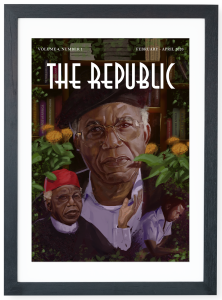 ₦70,000.00 – ₦75,000.00Select options This product has multiple variants. The options may be chosen on the product page
₦70,000.00 – ₦75,000.00Select options This product has multiple variants. The options may be chosen on the product page -
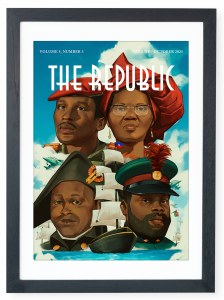 ₦70,000.00 – ₦75,000.00Select options This product has multiple variants. The options may be chosen on the product page
₦70,000.00 – ₦75,000.00Select options This product has multiple variants. The options may be chosen on the product page -
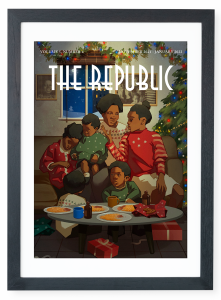 ₦70,000.00 – ₦75,000.00Select options This product has multiple variants. The options may be chosen on the product page
₦70,000.00 – ₦75,000.00Select options This product has multiple variants. The options may be chosen on the product page -
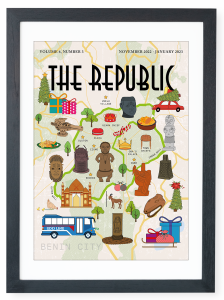 ₦70,000.00 – ₦75,000.00Select options This product has multiple variants. The options may be chosen on the product page
₦70,000.00 – ₦75,000.00Select options This product has multiple variants. The options may be chosen on the product page
shop the republic
-
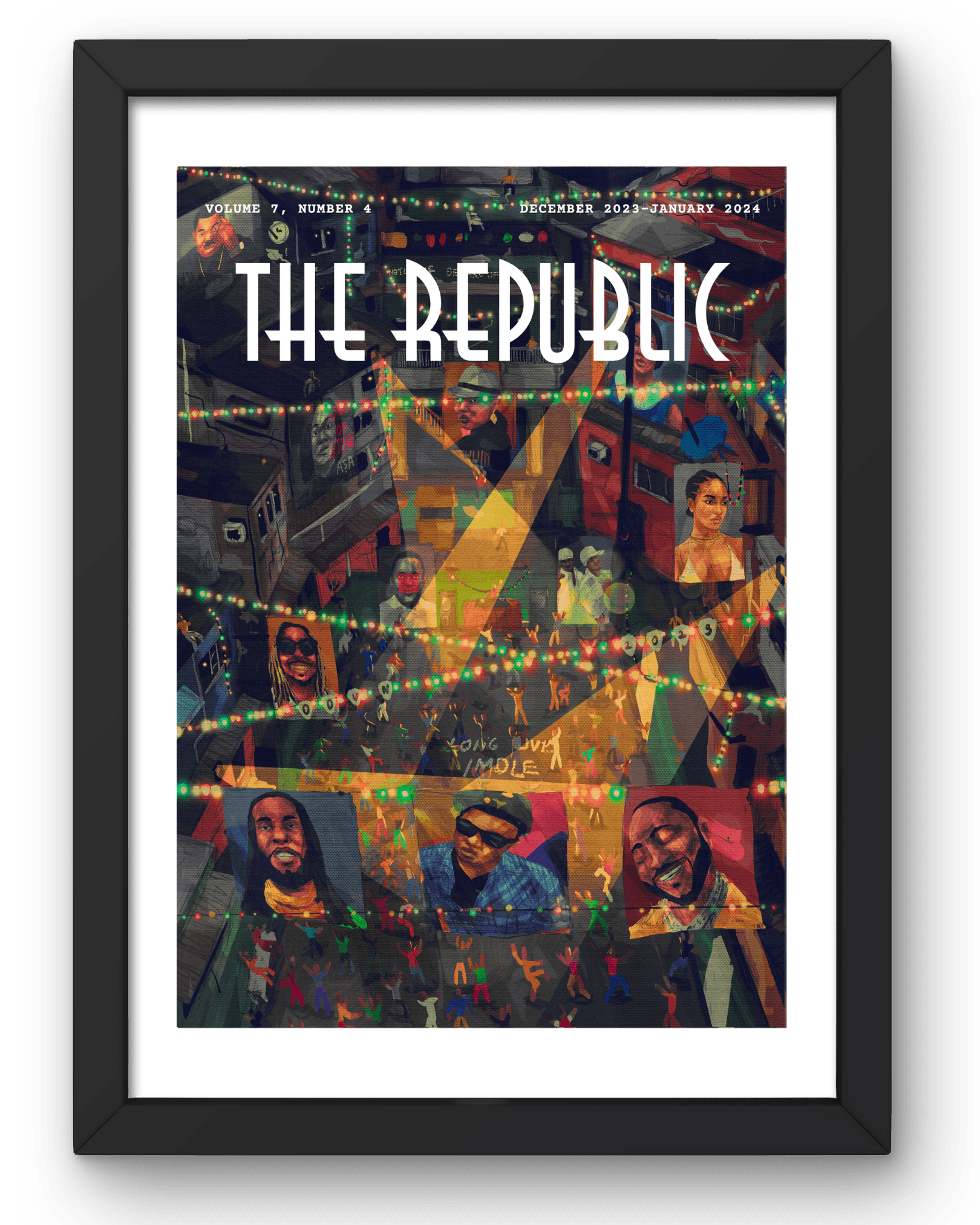 ₦70,000.00 – ₦75,000.00Select options This product has multiple variants. The options may be chosen on the product page
₦70,000.00 – ₦75,000.00Select options This product has multiple variants. The options may be chosen on the product page
CONTEMPORARY NIGERIAN CINEMA
Nigerian cinema has advanced since the 1960s and 1970s, currently reaching new revenue and audience heights in the New Nollywood age. Despite the supposed improvements, some Nigerian films are still burdened with story problems, their productions lack narrative cohesion, and they fail to comprehensively represent the social context of Nigeria.
Many Nigerian films try to represent an idealized society, a stark contrast to our tumultuous realities. About 133 million Nigerians live in multidimensional poverty, the country’s human capital index is the 7th lowest in the world and in February 2024, inflation reached 31.70 per cent, the highest it’s been in 24 years. Instead, these films focus on the glamour and problems of a life lived by the ‘One per cent’, problems that most Nigerians cannot relate to.
The Nigerian films that make some effort to represent societal realities do them using caricatures and slipshod visual language. There have been efforts to reimagine some of Nollywood’s popular films, with films like Living in Bondage getting a sequel (Living in Bondage: Breaking Free) in 2019 and Nneka the Pretty Serpent getting a remake in 2020. These reimagined efforts fall short, because even though they do not depend on the prosperity gospel for a satisfactory denouement, the new tales are plagued with the aforementioned inconsistencies. Living in Bondage: Breaking Free for example, also suffers from unnecessary exposition and plausibility sacrificed for the possibility of a sequel which is a symptom of an industry run on the marketing of the familiar for possible gains.
From films such as the ones that make up the Merry Men Trilogy, to television series, such as Far from Home and She Must Be Obeyed, these projects only achieve a pale imitation of real life in their characters and plots, failing to comprehensively navigate the complexities of power and competition in various Nigerian institutions. Now, as problematic as our stories may seem, the tales still manage to pull in big box office numbers (the first Merry Men raked in N235.6 million and the Living in Bondage sequel brought in N168.7 million). This begs the question: can we expect the audience to hold our film industry to high standards?
shop the republic
INDEPENDENCE OF STORY
Another looming problem is the lack of independence to figure out what stories we get to display. As a creative, I believe that the emergence of an enduring film tradition is inextricably linked to the independence of our cinema, an independence that we can’t claim to have had at any point in our young country’s history.
In the 1950s, the Enugu regional government sought to answer that question and gain that independence. At the time, Lloyd Young, an opportunistic independent producer out of Burbank, California came upon Nigerian shores looking to make his film, Mark of the Hawk. Young’s production company and the Enugu regional government made a deal. The Enugu regional government held up their end of the deal by providing Young with locations and subsidized costs with the filmmaker promising to ‘help’ the Eastern Region develop a Hollywood-style ‘movie colony’. That promise, to date, stands unfulfilled.
Presently, we have profit-driven international partnerships with our biggest studios to consider and with these media houses owning production studios, distribution houses and theatres (vertical integration, a vicious tool of monopoly in film industries), less populist Nollywood productions and independent filmmakers are at the mercy of these budding conglomerates. An example is FilmOne Entertainment whose international partners (exclusive theatrical licenses in West Africa) range from the Coca-Cola Company to the Walt Disney Company, Warner Brothers Discovery, Sony Pictures Entertainment to Empire Entertainment.
With so many of these companies to strategically satisfy, we find less and less of our indigenous and independent films on the screen with, for instance, local cinema giant, Filmhouse’s available screens (their theatrical chain) going to the company’s produced (and distributed) films and industry favourites. Given that FilmOne Entertainment has a 75 per cent market share in distribution in West Africa and is the largest theatrical chain in Nigeria (controlling 47 per cent of the industry as of 2023), it signals a growing threat to the industry, as far as displaying less populist indigenous and independent films go.
The control will influence the direction of stories emerging from our industry, with other studios looking to make the ‘kinds of films’ that will appeal to the team at FilmOne Entertainment, in a bid to secure whichever prime theatrical showing spots are still available to the rest of the industry. To paint a clearer picture, on the weekend of 23 February 2024 to 25 February 2024, seven of the top ten best-performing films at the box office were distributed by FilmOne Entertainment.
It’s encapsulated in Ofeimun’s aforementioned quote that an enduring film tradition had not emerged in the late 2000s. He then went on to say, ‘The great Nigerian film has not yet been made. When would it be made? Who will make it? Within what themes can such a film be made?’
Ofeimun’s questions are worth answering if we must come into our own as an industry. Already, a major animated television series, Iwájú, has been produced by Disney in collaboration with a British-based, Nigerian-helmed studio and Nigerian voice talents. However, Iwájú was received poorly by the Nigerian viewing audience, with many claiming that the show encapsulates nothing but the ideas of what the West thinks the country is.
This isn’t further helped by the fact that Disney+ the streaming platform hosting the series is not available in Nigeria. Whatever the result might have been, it signals a definite growing interest in the medium, one that has, in the past, depended on folklore and myths for source material. How much of a future does this medium have in our industry and will this medium—folklore source material already tried and tested—be a good place to start telling stories that deftly reflect the realities of our society?
It also begs the question of just how much control we can exert in the animation space in Nigeria if we are beholden to the expertise of established industry players like Disney. Is there a risk of losing control of the budding industry to foreign entertainment’s financial interests?
CHALLENGING THE STATUS QUO
Interestingly, there has already been a promising move towards exploring myths, legends and folklore among independent Nigerian filmmakers. The critically acclaimed Juju Stories (2021) by the Surreal 16 Collective (Michael Omonua, Abba T. Makama and C.J Obasi) is a three-film anthology in which the filmmakers each tackle a juju story rooted in Nigerian legend. The three filmmakers take care to adapt these stories in modern contexts, laden them with all the societal ills and fears, while also finding space to consider their thematic pursuits as filmmakers. The films touch on ill-fated love, class and its consequences, and an almost religious obsession with a friend, taking care to reflect current Nigerian realities in the worlds that these stories occupy.
Obasi’s Mami Wata (2023) is another indie production that leans towards that direction with considerable success and acclaim. It touches on the decline of traditions, the erasure of culture and the heavy hand of those who perpetuate modernity for personal benefit. As far as considering the representation of West African spirituality on the big screen, it succeeds in sidestepping the demonizing approach endemic to Nollywood and instead celebrates the beliefs and the worship of the oceanic goddess, a first in New Nollywood Cinema, also visually representing Black skin’s beauty, with the hues and shadows creating an ethereal effect underrepresented in Nigerian Cinema.
In the animation space, we find Ajaka: Lost in Rome (2023), a story about the oft-forgotten elder brother of Sango. Ajaka finds himself in Rome, betrayed, captured and made a gladiator and must find his way back to Oyo, to take his revenge on Sango and those who conspired to depose him. Produced by Spoof Animation, the nineteen-minute reimagined animated film is exceptional, engaging and cohesive, providing a strong basis in Nigerian cultural heritage which is in sharp contrast to Iwájú which, even though it’s set in a future that we cannot exactly predict, finds no basis in the realities that would have connected a Nigerian audience to the body of work. Ajaka: Lost in Rome has received critical acclaim from local audiences and critics with the production company seeking funding to make a feature-length film, pushing the boundaries of what animation can do on the Nigerian cinema landscape.
Another short film worth spotlighting is Ugo Azuya’s Swimming in a Sea of Trauma. A deft, dense body of work with a six-minute thirty-second runtime, the film explores the trauma incurred due to the genocide of the Igbo people during the Nigerian Civil War. Azuya imbues this story with the specificities of Igbo spirituality, also engaging with trauma that Nigerian regime after regime has, to date, refused to engage or acknowledge. It succeeds in opening up a dialogue about this deeply traumatic event in our country’s history and conversations about this reality will only move us in the direction of healing these wounds.
In mainstream Nollywood, The Origin: Madam Koi-Koi, a television series based on the urban legend of Madam Koi-koi, a tale legendary across secondary schooling institutions in Nigeria, was released in 2023, heralding the possibilities of more folklore and myth adaptations being created for a wider, theatre-going audience. Looking across West Africa, we find similar stories steeped in mythos endemic to their respective regions, including Philippe Lacôte’s Night of the Kings and Jean Luc Herbulot’s Saloum.
shop the republic
TELLING AND RETELLING OUR STORIES
The aforementioned films are representative of a step in the right direction regarding telling and retelling Nigerian (and West African) stories rooted in myth, legend and folklore. This is not to say that this is the only path to finding our enduring film language; diverse stories are the soul of every industry, but this path has shown much promise so far and it’s been barely explored in modern-day contexts. There’s also consideration for what story success itself can be termed as. For a mini-series like Iwájú, even though Nigerians were behind it, there’s no denying that it was made to cater to a Western audience, offering them a reductive story littered with enough slang and endemic items to be vaguely associated with the Nigerian reality. The fact that this was successful in the West doesn’t in any way represent the kind of shift that represents a push for an enduring film language.
For a goal as grand as that of developing a new cinematic consciousness, we must acquiesce— outside of our strong convictions—that change is something that will occur with trying and testing. There are still some ways to go as regards popular acceptance from local audiences but we must recognize that these films are budding representations of the collective consciousness of their home countries and they represent a great opportunity for critical cinematic evolution. We must also acknowledge our role as the audience in pushing for necessary evolution because the entire structure of the Nigerian film industry (currently) is capitalistic, and as long as audiences do not demand more, the films may stay as they are.
We already saw a shift in that direction with Chief Daddy 2, whose audience collectively disparaged the film at its release in 2022. The audience concurrently praised For Maria: Ebun Pataki by Damilola Orimogunje when it finally landed on Netflix in January 2022. A film that focused on the intimacies of post-partum depression, a rarely addressed and shunned aspect in Nigerian society, found rousing success with a Nigerian audience. When corporate pockets are in danger, aligning with audience demands (and in the larger context, cinematic evolution demands) will become a responsibility that the studios take up with aplomb.
Filmmakers have much to contend with as far as funding and access to the limited number of screens in Nigeria and West Africa goes, but as we search for the independence of our region’s cinematic endeavours, we must also consider what stories to tell. I strongly believe that in considering telling stories rooted in the mythos and storytelling traditions unique to our region, we’ll possibly find, somewhere down the line, the great Nigerian film, one that embodies all of the realities, culture and style endemic to us⎈
shop the republic
BUY THE MAGAZINE AND/OR THE COVER
-
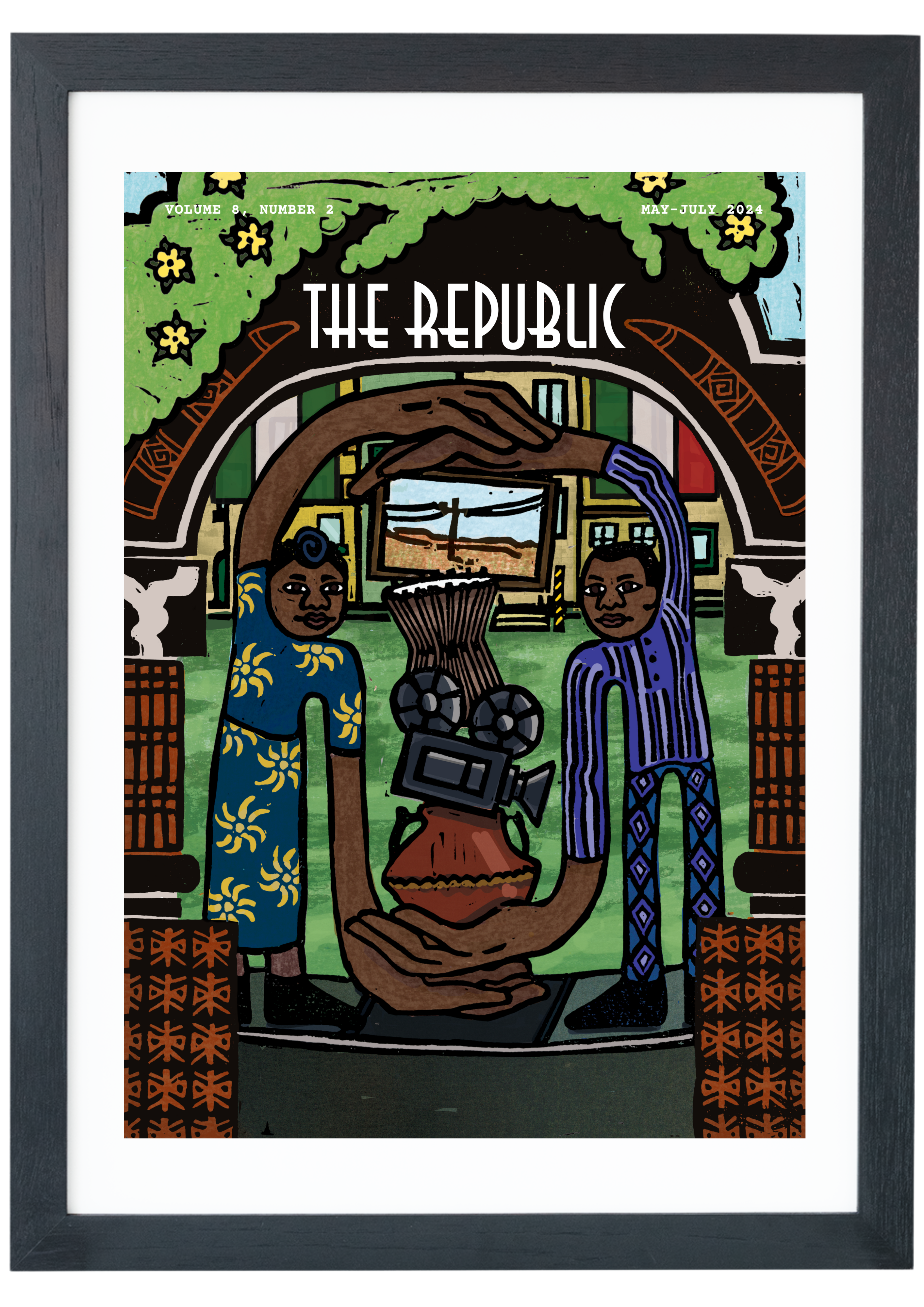 ₦140,000.00 – ₦150,000.00Select options This product has multiple variants. The options may be chosen on the product page
₦140,000.00 – ₦150,000.00Select options This product has multiple variants. The options may be chosen on the product page -
 ₦10,000.00 – ₦30,000.00Select options This product has multiple variants. The options may be chosen on the product page
₦10,000.00 – ₦30,000.00Select options This product has multiple variants. The options may be chosen on the product page




